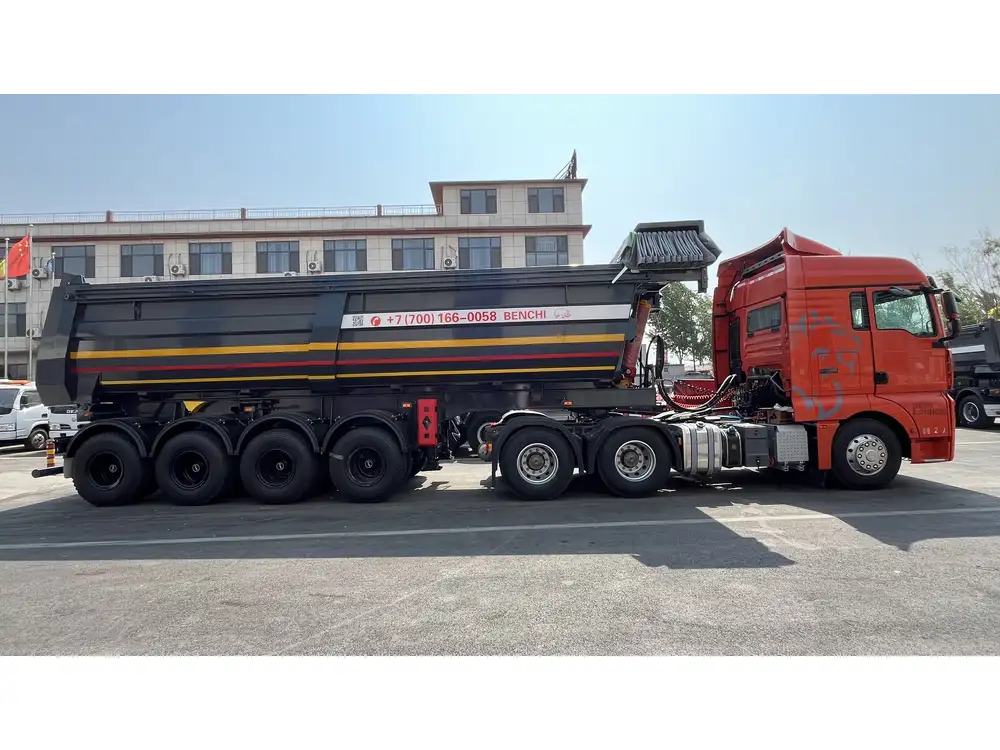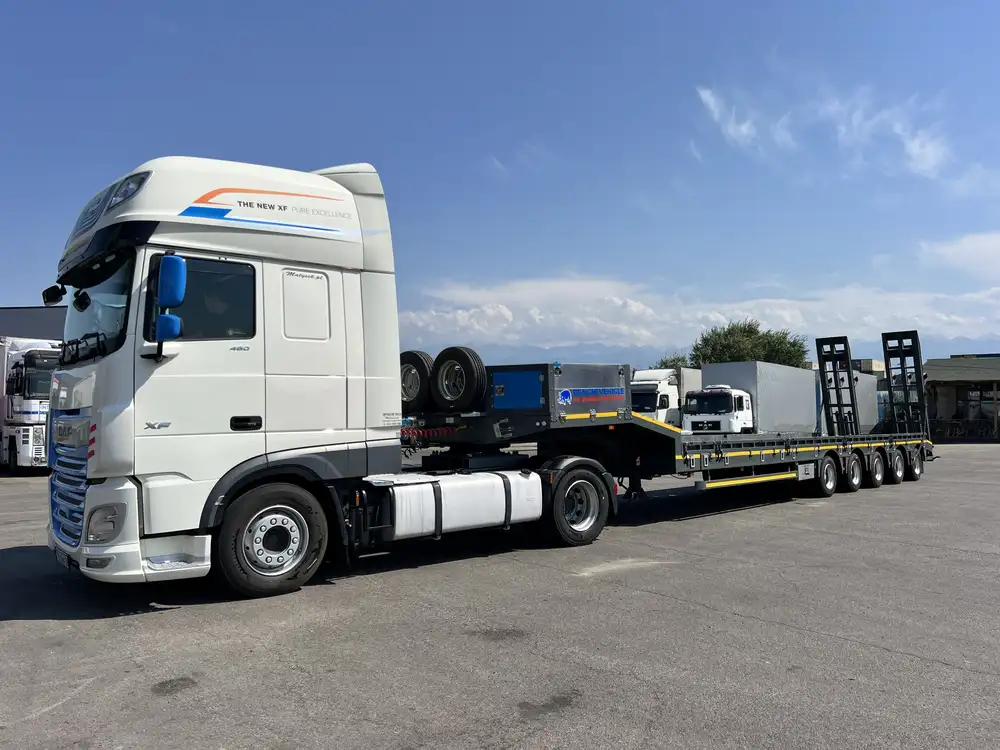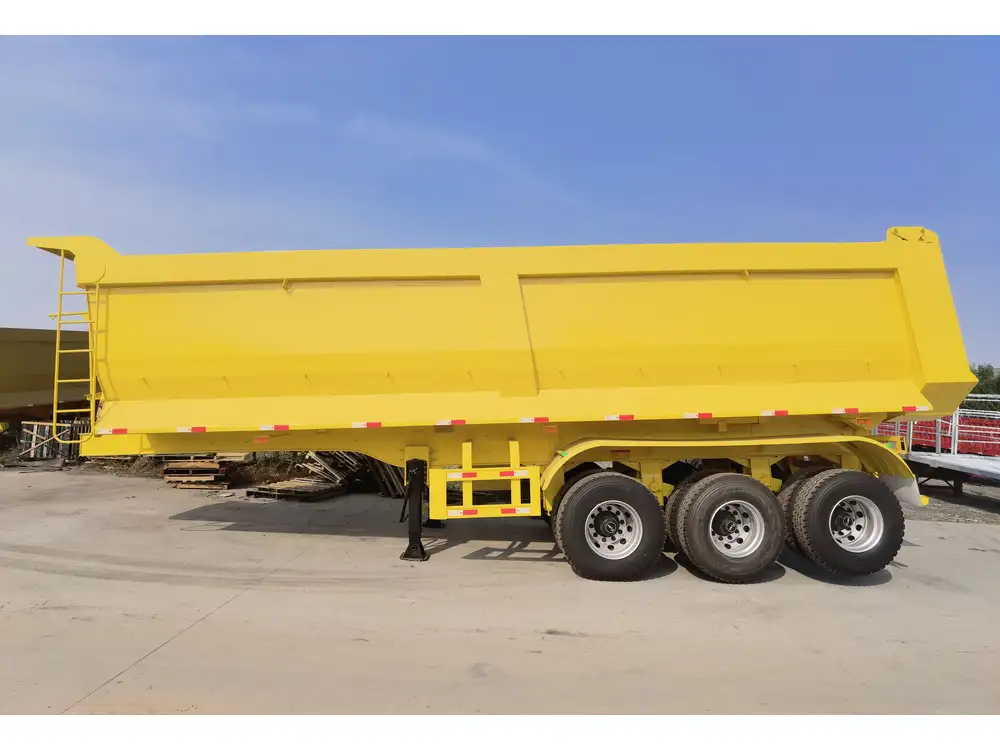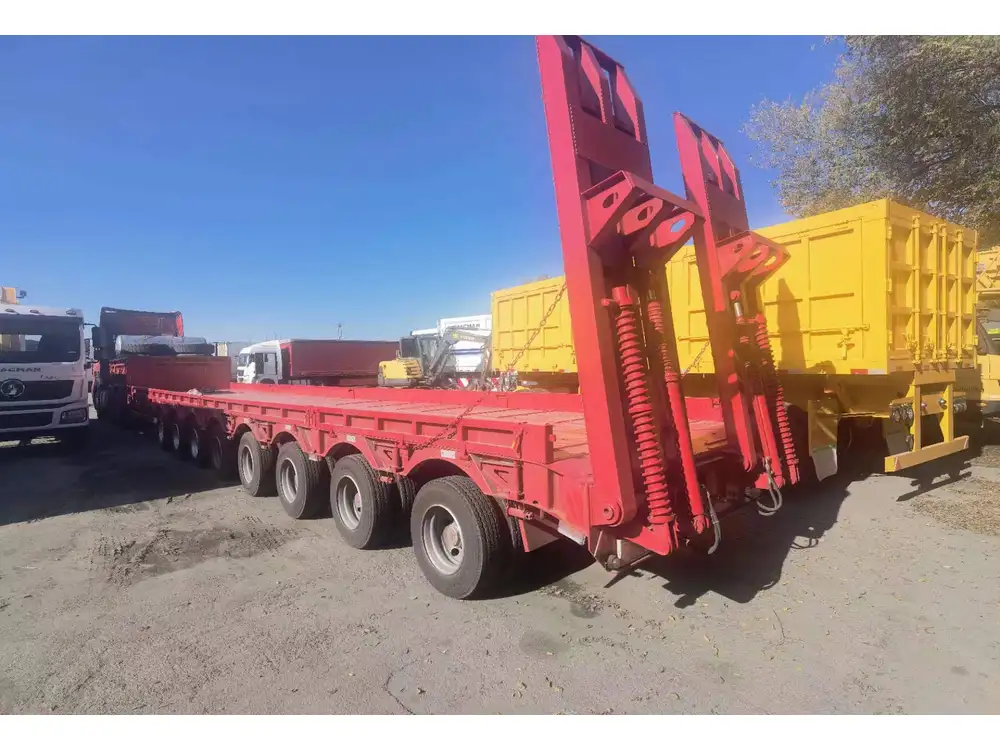When delving into the world of tanker trailers, their size and specifications often arise as key considerations for operators, manufacturers, and logistics professionals alike. Understanding the essential features, including dimensions and their implications on load capacity and road regulations, is crucial for optimizing transportation efficiency and safety. In this guide, we will explore the diverse types of tanker trailers, their dimensions, and factors influencing their design.
Tanker Trailer Dimensions: An Overview
Tanker trailers, designed for transporting liquids, gases, and other materials, vary in length, width, and height. The most common length for these trailers in the United States typically ranges from 40 to 53 feet, with the standard being roughly 48 to 53 feet. Below is a comparative breakdown of different tanker trailer types based on their dimensions:
| Tanker Type | Length | Width | Height |
|---|---|---|---|
| Chemical Tanker | 40-53 feet | 8.5 feet | 13.5 feet |
| Food Grade Tanker | 42-53 feet | 8.5 feet | 13.5 feet |
| Petroleum Tanker | 40-53 feet | 8.5 feet | 13.5 feet |
| Beverage Tanker | 40-48 feet | 8.5 feet | 13.5 feet |
Factors Influencing Tanker Trailer Length
Regulatory Considerations: The Federal Motor Carrier Safety Administration (FMCSA) imposes regulations on the maximum length for trailers on public highways. Most states adhere to a maximum standard of 53 feet; however, local regulations may vary.
Load Type: Different materials, whether hazardous or non-hazardous, often dictate the need for specific tanker configurations, which can impact overall length. For example, petroleum tankers are generally designed to maximize volume, thus opting for longer dimensions.
Vehicle Compatibility: The compatibility with the truck’s chassis withstands significant consideration. Longer trailers may not suit every truck type due to axle weight variation and maneuverability challenges in urban environments.
Operational Needs: Logistics demands, such as seasonal fluctuations, can influence the choice of tanker feet needed. For instance, food-grade tankers may be shorter to navigate more confined areas, while larger chemical hauls may exploit longer trailers for volume maximization.

Types of Tanker Trailers
Tanker trailers are not a one-size-fits-all solution. They are constructed with specific purposes and materials in mind. Below are several widely recognized types:
1. Food Grade Tanker Trailers
Designed for transporting consumables, food-grade tankers are characterized by their stringent sanitation requirements. Construction often comprises stainless steel, ensuring hygiene and preventing contamination. Typical lengths range from 42 to 48 feet.
2. Chemical Tanker Trailers
Typically engineered to transport hazardous materials, these tankers incorporate reinforced designs and specialized coatings to withstand corrosive substances. The average length is about 40 to 53 feet, depending on the material being transported.

3. Petroleum Tanker Trailers
Ranging from gas to diesel, the petroleum tanker is engineered for maximum safety and efficiency. They often feature multiple compartments for transporting various fuel types. Lengths vary considerably but are commonly between 40 to 53 feet.
4. Vacuum Tanker Trailers
Vacuum tankers, used in waste management, possess specialized pumping capabilities to transport sludge and other waste. These trailers are typically shorter, ranging from 30 to 40 feet.
Understanding Capacity and Load Distribution
The maximum load capacity of tanker trailers doesn’t solely rely on dimensions but hinges on multiple factors, such as material density and regulatory standards.

Load Capacity Breakdown
Most trailers are designed to carry a maximum capacity of around 5,000 to 9,000 gallons of standard liquid, equivalent to:
- Petroleum: 7 – 9 lbs per gallon
- Water: 8.34 lbs per gallon
- Chemicals: Varies widely based on specific gravity
Importance of Load Distribution
Proper load distribution is paramount for safety and efficiency. Incorrectly loaded tankers can lead to:
- Rollovers: An imbalanced load can compromise handling, especially during turns or sudden stops.
- Tire Wear: Uneven weight distribution accelerates tire degradation and maintenance costs.
- Legal Issues: Overloading beyond federal limits can invite hefty fines and operational downtime.
Weight and Axle Configuration
Understanding the relationship between trailer length, overall weight, and axle configuration is vital. State regulations often dictate laws surrounding the maximum allowable weight per axle, typically averaging 20,000 to 34,000 pounds per tandem axle.
| Axle Configuration | Max Weight (lbs) |
|---|---|
| Single Axle | 20,000-22,000 |
| Tandem Axle | 34,000-40,000 |
| Tridem Axle | 50,000-60,000 |

Road Regulations and Compliance
Compliance with regulations is an essential aspect of operating tanker trailers safely and legally. Various governing bodies enforce rules to maintain safety across the transportation sector.
Federal Regulations
The FMCSA governs many aspects related to commercial vehicle operation, including stipulations about length, width, height, and weight limits. Understanding these regulations can streamline your operations and help avoid penalties.
State Regulations
In addition to federal guidelines, individual states may impose additional constraints, especially concerning road types and conditions. For instance, bridges may have lower weight limits that can affect route planning for longer or heavier tankers.

Safety Management
Transporting liquids comes with inherent risks. Proper management includes:
- Hazardous Material Training: Drivers must undergo specialized training to handle waste or chemicals.
- Inspection Protocols: Regularly scheduled maintenance and inspections help mitigate the risk of spills and accidents.
- Emergency Response Plans: Having strategies in place ensures preparedness in case of accidents or spills.
Advantages of Selecting the Right Tanker Length
Choosing the appropriate length for a tanker trailer is essential for maximizing efficiency.
1. Fuel Efficiency
Longer trailers can potentially reduce the number of trips required to transport a given volume, thereby decreasing fuel consumption and costs.

2. Versatile Applications
With various lengths available, operators can customize their fleets based on specific needs, allowing for flexibility in transport.
3. Reduced Environmental Impact
Utilizing longer, optimized units can lead to lower emissions per unit transported, aligning with sustainability goals.
Frequently Asked Questions (FAQs)

How is the length of a tanker trailer determined?
The length of a tanker trailer is affected by regulatory limits, the type of goods transported, and operational requirements.
What is the average weight of a fully loaded tanker trailer?
A fully loaded tanker trailer can weigh anywhere between 80,000 to 100,000 pounds, factoring in the trailer’s empty weight.
What are the implications of exceeding length regulations?
Exceeding legal dimensions can result in penalties, force rerouting through non-compliant areas, or require additional permits.

Can a tanker trailer be modified for different loads?
While tweaks can be made, significant conversions may result in stringent compliance checks and potential structural weaknesses.
How does weather impact tanker trailer operation?
Adverse weather conditions necessitate careful monitoring, as icy or wet roads can significantly affect handling and braking.
Conclusion
In conclusion, the world of tanker trailers is multifaceted, dictated by several regulations and operational realities. Understanding the specifications—most importantly, length—not only streamlines the logistics chain but ensures compliance and enhanced safety. By utilizing this comprehensive guide, operators can make informed decisions that optimize their fleets for efficiency, safety, and regulatory compliance. Choose wisely, operate safely, and ensure that your trucking endeavors remain on the cutting edge of the industry.



